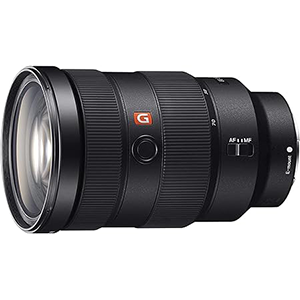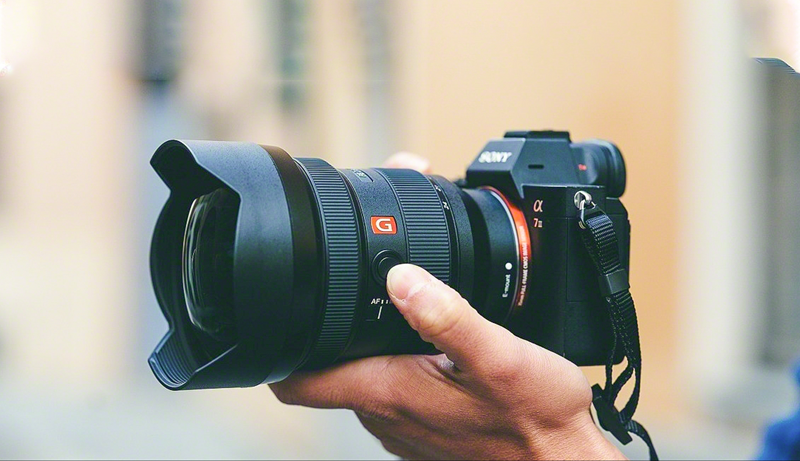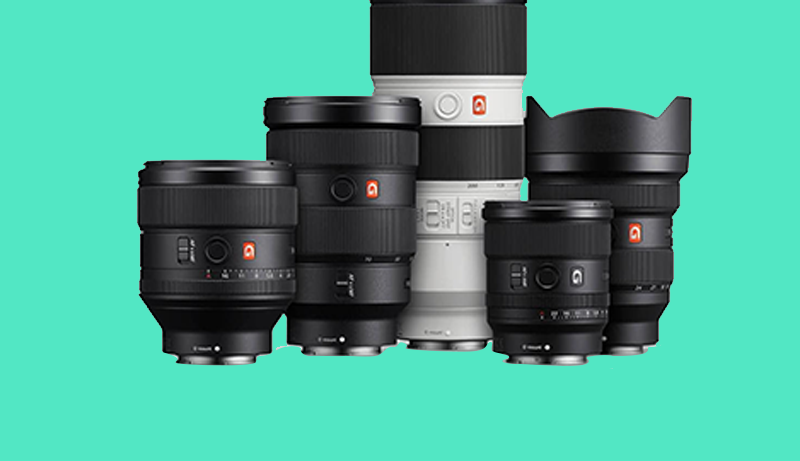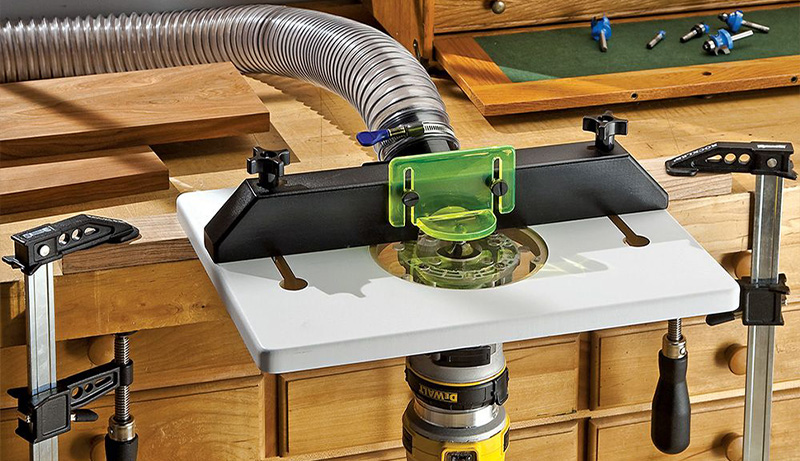Zoom lenses are indispensable tools for photographers seeking flexibility and versatility in their craft. Whether you’re a professional aiming to capture breathtaking landscapes, a wedding photographer covering diverse scenes, or a hobbyist experimenting with different photographic styles, the right zoom lens can be a game-changer. In this comprehensive guide, we’ll delve into the world of the best zoom lenses for sony a7iii, offering valuable insights to help you make an informed and satisfying purchase decision.
Top pick
Sony FE 24-70mm f/2.8 GM
The Sony SEL2470GM delivers lifelike, detailed photos with reduced chromatic aberration.
Editor’s choice
Sony FE 70-200mm f/2.8 GM OSS
This Lens is a premier optical instrument, delivering outstanding performance for both photography and videography.
Best value
Tamron 28-75mm f/2.8 Di III RXD
Impressive f/2.8 aperture enhances image quality and bokeh. Compact and lightweight for easy portability.
The Sony A7III stands as a popular full-frame mirrorless camera renowned for its exceptional image quality and advanced features. To fully unlock its potential, investing in a high-quality zoom lens is crucial. Zoom lenses, in contrast to their prime counterparts, provide a variable focal length, enabling you to adjust your framing without the need to swap lenses. This versatility proves invaluable in a multitude of photographic scenarios.
5 Best Zoom Lenses for Sony A7iii Reviews
When it comes to selecting a zoom lens for your Sony A7III, several vital factors warrant consideration. These include the focal length range, aperture size, image stabilization, and build quality. Let’s take an in-depth look at these factors to provide you with a clear understanding of what to seek when navigating the vast world of zoom lenses.
1. Sony FE 24-70mm f/2.8 GM

The Sony SEL2470GM E-Mount Camera Lens is a prominent member of Sony’s esteemed G Master series, meticulously engineered for E-mount full-frame cameras, presenting an impeccable match for the Sony A7III. With its 24-70mm F2.8 focal range, this lens earns widespread acclaim for its peerless image quality and remarkable adaptability, serving the needs of both professional photographers and ardent enthusiasts.
This lens is celebrated for its capacity to yield photography that mirrors reality, delivering a genuine and lifelike visual experience. The credit for this lies in its deployment of Extra-low Dispersion (ED) and Super Extra-low Dispersion (Super ED) glass elements, operating in concert to abolish chromatic aberration. The result is imagery that’s rich in texture and replete with detail. The campaign against aberration is further strengthened through the integration of two aspherical elements and an exceedingly precise XA (extreme aspherical) element. This meticulously crafted assembly optimizes resolution and ensures that your images remain unerringly sharp, free from any distortions.
Another noteworthy aspect of the lens is its ingenious optical design, featuring a nine-blade circular aperture. This design is instrumental in achieving the much-sought-after bokeh effect, where the background beautifully blurs, emphasizing the main subject. This is particularly invaluable for portrait and close-up photography, where it imparts a compelling aesthetic to your shots.
The lens’s performance is further elevated by the application of Nano AR coating to its elements. This coating enhances light transmission while effectively mitigating lens flare and ghosting. The outcome is an augmentation of clarity, contrast, and the overall quality of your images. This ensures that your photos are resplendent with well-defined colors and striking contrast.
In terms of specifications, the Sony SEL2470GM boasts a wide aperture range of f/2.8 to f/22, providing you with the flexibility to excel in diverse lighting conditions while allowing for creative depth-of-field control. With a minimum focus distance of 1.24 feet and a maximum magnification ratio of 0.24x, this lens is primed to handle a broad spectrum of photography scenarios.
Moreover, the lens encompasses a 35mm equivalent focal length of 36-105mm, offering adaptability across multiple applications. From wide-angle landscape and architectural photography to the finesse of portraiture and close-ups at the telephoto end, it remains steadfast. The angle of view spans from 84-34 degrees (APS-C: 61-23 degrees), ensuring its applicability across a multitude of shooting situations.
However, it’s imperative to weigh certain considerations when contemplating this lens. It bears a notable size and weight, which might challenge its suitability for travel. Additionally, it does not incorporate optical image stabilization, necessitating a steady hand or higher shutter speeds in low-light conditions.
Pros:
- Exceptional Image Quality: The Sony SEL2470GM delivers lifelike, detailed photos with reduced chromatic aberration.
- Versatile Focal Range: Its 24-70mm range suits various photography styles.
- Beautiful Bokeh: The circular aperture enhances background blur for appealing portraits.
Cons:
- Size and Weight: The lens is relatively large and heavy.
- No Image Stabilization: Lack of optical stabilization can pose challenges in low light.
2. Sony FE 70-200mm f/2.8 GM OSS

The Sony FE 70-200mm f/2.8 GM OSS Lens stands as a pinnacle of optical craftsmanship, meticulously designed to cater to the exacting demands of professional photographers and videographers. Distinguished by its G Master design, it excels in delivering exceptional sharpness and a beautifully creamy bokeh, rendering it a prime choice for producing striking, top-tier imagery.
This lens maintains a constant f/2.8 maximum aperture, ensuring a consistent level of exposure and depth of field across its versatile zoom range. At 1480 grams (excluding the tripod mount), it offers a lightweight, yet robust solution for photographers on the move.
One of its most remarkable features is its leading-edge minimum focus distance of 37.8 inches and a maximum magnification of 0.25x. The dual floating focus system enables swift and precise autofocus performance, enhanced by advanced optical elements like XA, ED, and Super ED glass, as well as Nano AR Coating, which simultaneously heightens resolution while reducing chromatic aberration and flare.
Videographers will appreciate its minimal focus breathing and parfocal design, delivering seamless video shooting experiences. The direct-coupled mechanical focus system affords meticulous manual focus control.
The lens’s resilience is further bolstered by its resistance to dust and moisture, guaranteeing dependable performance in varying conditions. Its unchanging length during focusing and zooming, paired with Optical Steady Shot Image stabilization, ensures consistently steady shots and fluid zoom transitions.
With an 11-blade circular aperture, it creates enchanting, soft bokeh, while the Nano AR coating adeptly mitigates reflections and ghosting. Moreover, the inclusion of an extreme aspherical (XA) element boasting an astonishing 0.01-micron surface precision assures unparalleled optical excellence.
In summation, the Sony FE 70-200mm f/2.8 GM OSS Lens is a premier optical instrument, delivering outstanding performance for both photography and videography, establishing itself as an indispensable tool for professionals and enthusiasts who demand the highest caliber of image quality and versatility in their creative endeavors.
Pros:
- Exceptional optical quality
- Constant f/2.8 aperture
- Versatile zoom range
- Lightweight design
- Advanced optical elements
- Robust construction
Cons:
- High price
- Size and weight
- Not ideal for budget-conscious buyers
- May be cumbersome for extended use
3. Tamron 28-75mm f/2.8 Di III RXD

The Tamron 28-75mm f/2.8 lens, designed for Sony Mirrorless Full Frame E Mount cameras, is a versatile and compact choice highly favored by photographers and videographers. Its rapid f/2.8 aperture delivers exceptional image quality and enchanting background blur effects, ideal for portrait photography and achieving depth and clarity.
Notably, its lightweight design at 19.4 ounces and compact 4.6-inch length make it an optimal companion for photographers on the go, ensuring extended shoots remain comfortable.
The lens excels in close-focusing, allowing subjects to be captured as near as 7.5 inches in wide-angle and 15.3 inches in telephoto settings. This adaptability suits a wide range of shooting scenarios, from expansive landscapes to intimate portraits.
For videographers, the “rxd” stepping motor autofocus guarantees near-silent, precise focusing—essential for video recording without unwanted motor noise interference.
Moisture-resistant construction and a fluorine coating provide weather protection, ensuring the lens’s longevity and dependability in varying conditions, particularly attractive to outdoor and travel photographers.
To sum up, the Tamron 28-75mm f/2.8 lens harmoniously combines optical brilliance, compact form, versatile focusing, and video-friendly capabilities. It’s a valuable asset for Sony mirrorless full-frame photographers seeking a dependable, high-performance lens, enhanced by its durability and ease of use in various environments.
Pros:
- Impressive f/2.8 aperture enhances image quality and bokeh.
- Compact and lightweight for easy portability.
- Versatile close-focusing for diverse shooting situations.
- Silent “rxd” autofocus is perfect for video work.
- Moisture-resistant construction ensures durability.
- Well-suited for portrait and travel photography.
Cons:
- Limited zoom range (28-75mm).
- Inadequate for extreme telephoto demands.
- Durability may not match premium lenses.
4. Sony FE 16-35mm f/2.8 GM

The Sony FE 16-35mm F2.8 GM Wide-Angle Zoom Lens (SEL1635GM) stands as a testament to optical excellence, meticulously crafted to meet the exacting standards of professional photographers and videographers. It sets a remarkable benchmark by achieving a stunning 50 Line pairs/mm resolving power, ensuring unparalleled image sharpness and clarity.
A prominent feature of this lens is the incorporation of two XA (extreme aspherical) elements with precise surface engineering. This design significantly reduces aberrations and distortions, resulting in images of pristine quality. The lens offers a versatile shooting range, with a minimum focus distance of 0.28 meters (0.92 feet) and a maximum magnification ratio of 0.19. Whether you’re capturing subjects up close or distant landscapes, this lens excels.
The constant F2.8 maximum aperture is a valuable asset, maintaining exposure and depth of field consistency throughout its zoom range. Boasting 11 aperture blades and an uncompromising G Master design, this lens not only delivers high resolution but also produces exceptionally smooth bokeh, enhancing its suitability for creative and artistic photography.
This lens provides an adaptable angle of view, ranging from 107° to 63°, making it a versatile choice for various photographic scenarios. In the package, essential accessories are included, such as the hood, lens front cap, lens rear cap, and a protective case. Moreover, its compatibility with Sony E-mount cameras seamlessly integrates it into the Sony camera system.
The Sony FE 16-35mm F2.8 GM lens epitomizes optical excellence, offering unparalleled image quality, a constant aperture, and versatility within a robust and meticulously designed package. It’s the ideal choice for both professionals and photography enthusiasts who demand uncompromising quality and flexibility in their wide-angle photography pursuits.
Pros:
- Exceptional 50 Line pairs/mm resolving power for razor-sharp images.
- Two XA elements minimize aberrations, ensuring impeccable image quality.
- Versatile minimum focus distance and maximum magnification ratio.
- Constant F2.8 aperture for precise exposure and depth control.
- 11 aperture blades create silky-smooth bokeh.
- Compatibility with Sony E-mount cameras.
Cons:
- High price point.
- Noticeable bulk and weight.
- May not be ideal for casual photographers.
- Limited telephoto capabilities.
5. Sony FE 12-24mm f/4 G

The Sony FE 12-24mm F4 G Wide-Angle Zoom Lens (SEL1224G) is a standout addition to Sony’s lens collection, tailored to cater to the diverse needs of both amateur and professional photographers and videographers. It proudly boasts Sony’s distinguished G Lens design, ensuring uncompromising corner-to-corner high resolution, which is particularly valuable for capturing breathtaking wide-angle shots.
Featuring a maximum magnification ratio of 0.14, this lens offers remarkable versatility in bringing subjects closer. Its premium optics encompass 4 aspherical elements, 1 Super ED element, and 3 ED glass elements, forming an optical arrangement that significantly reduces distortions and elevates overall image quality.
With a constant F4 maximum aperture, it maintains consistent exposure levels and depth of field, rendering it highly effective in low-light conditions and providing photographers with creative control. Furthermore, the 7-blade circular aperture enhances its ability to produce beautifully soft and artistic bokeh, enriching the visual appeal of images.
The lens is equipped with a Direct Drive Supersonic Wave motor, ensuring swift, noiseless, and precise autofocus, catering to the needs of both videographers and photographers who require rapid and accurate focusing.
Included in the package are essential accessories, such as the lens front cap, lens rear cap, and a protective case. This lens is compatible with Sony A-mount cameras, broadening its usability within the Sony ecosystem.
In summary, the Sony FE 12-24mm F4 G lens is an exceptional wide-angle zoom lens known for its remarkable resolution, premium optics, and the convenience of a consistent aperture. It’s an invaluable tool for those keen on exploring the creative potential of wide-angle photography, making it an excellent choice for capturing landscapes, architectural marvels, and interior spaces. Its swift and silent autofocus also enhances its desirability, particularly for video content creators.
Pros:
- Impressive corner-to-corner high resolution.
- Versatile maximum magnification capability.
- Premium optics featuring aspherical and ED elements.
- Steady F4 aperture for effective low-light performance.
- 7-blade circular aperture creates captivating bokeh.
- Swift, noiseless, and accurate autofocus.
Cons:
- Notable bulk and weight.
- Restricted low-light capabilities due to F4 aperture.
- May not be ideal for those in search of a more compact lens.
Buying Guide for Sony A7III Zoom Lenses

When selecting zoom lenses for your Sony A7III, prioritize factors like focal length range, aperture size, image stabilization, build quality, autofocus performance, and budget compatibility. Gather insights from user reviews and expert recommendations to make a well-informed choice that suits your photography requirements and personal preferences.
Focal Length Range
The focal length range of a zoom lens is of paramount importance as it directly influences the breadth or narrowness of your field of view. Common zoom lens categories encompass wide-angle (typically around 16-35mm), standard zoom (like the versatile 24-70mm), and telephoto (e.g., 70-200mm) lenses. The choice should be aligned with your unique photography style and requirements.
For capturing sweeping landscapes and architectural wonders, wide-angle zooms prove to be ideal choices. Standard zoom lenses offer remarkable versatility, catering to a wide range of photographic scenarios.
Telephoto zooms come into their own when photographing dynamic sports events, captivating wildlife, or creating striking portraits.
Aperture Size
The maximum aperture, denoted by the f-stop (e.g., f/2.8 or f/4), significantly influences low-light performance and depth of field control. A wider aperture (indicated by a lower f-number) facilitates superior performance in dimly lit conditions and grants the ability to create appealing background blur, known as bokeh.
Opt for an f/2.8 lens if low-light situations frequently find their way into your photography endeavors.
On the other hand, if you prioritize a more extensive depth of field, an f/4 lens might meet your needs effectively.
Image Stabilization
While the Sony A7III boasts in-body image stabilization, some lenses come equipped with their image stabilization systems (OSS). This additional stabilization enhances the sharpness of your images when shooting at slower shutter speeds, particularly crucial in telephoto lenses. If your photographic pursuits often involve handheld shooting or low-light conditions, image stabilization is an invaluable feature.
Build Quality
Take into account the lens’s build quality, weather-sealing, and physical dimensions. Lenses designed for professional usage tend to exhibit enhanced robustness, a crucial trait for enduring demanding conditions. Weather-sealed lenses are adept at guarding against dust and moisture, making them perfect for outdoor photography.
Autofocus Speed and Accuracy
Emphasize lenses that excel in autofocus performance with impressive speed and precision. This becomes particularly critical when capturing moving subjects or maintaining the utmost clarity in diverse shooting situations.
Brand Compatibility
While Sony’s native FE lenses are solid choices, it’s worth noting that third-party manufacturers such as Tamron and Sigma also produce top-notch zoom lenses compatible with the Sony A7III. These alternatives can provide cost-effective yet high-quality solutions.
Budget Considerations
Determine your budget parameters in advance. Zoom lenses exhibit considerable price variation. While professional-grade lenses typically deliver top-tier image quality, there are budget-friendly alternatives that yield exceptional results, catering to photography enthusiasts.
User Reviews and Expert Opinions
Prior to making your final selection, invest time in scouring user reviews and seeking insights from photography experts and forums. Real-world experiences and testimonials will provide you with invaluable practical insights to guide your decision-making.
The optimal zoom lens for your Sony A7III hinges on your specific preferences and needs. The focal length range, aperture size, image stabilization, build quality, and budget should all play key roles in your decision-making process. A well-chosen zoom lens has the potential to elevate your photographic capabilities, enabling you to craft stunning images across a diverse array of scenarios. Regardless of whether you’re a novice or a seasoned professional, an investment in a high-quality zoom lens represents a significant stride towards unlocking the full potential of your Sony A7III camera.
Prime vs. Zoom Lenses: Making the Right Choice for Your Photography
The decision between prime and zoom lenses is a critical one for photographers, as it significantly impacts the gear they carry and the creative options they have at their disposal. Each type of lens brings its unique strengths and limitations, and the ultimate choice depends on your photographic style, preferences, and requirements.
Prime Lenses: Precision and Versatility
Prime lenses are fixed focal length lenses, providing a single, unalterable field of view. They are renowned for their outstanding sharpness, optical excellence, and capability to perform admirably in low-light conditions. Prime lenses are available in various focal lengths, each catering to specific photography genres.
One of the standout attributes of prime lenses is their optical simplicity. Featuring fewer glass elements, they can deliver exceptional image quality with minimal aberrations, distortions, and optical flaws. This optical purity also permits wider apertures, making prime lenses well-suited for achieving a shallow depth of field and generating the delightful background blur known as bokeh. This characteristic is especially advantageous for portrait and macro photography.
Moreover, prime lenses are typically more compact, lightweight, and portable than zoom lenses, rendering them excellent choices for street and travel photography. Their fixed focal length encourages photographers to explore their surroundings and capture shots from unique perspectives, potentially leading to more compelling compositions.
Zoom Lenses: Versatility and Convenience
Zoom lenses, on the other hand, offer a range of focal lengths within a single lens, bestowing versatility and convenience. They are popular for their adaptability across various shooting scenarios, making them ideal for events, sports, wildlife, and documentary photography.
The principal advantage of zoom lenses lies in their flexibility. By simply adjusting the zoom ring, photographers can swiftly change the focal length, enabling them to frame subjects both near and far without the need for lens changes. This adaptability makes zoom lenses invaluable in situations where the action is unpredictable, and frequent lens swaps are impractical.
However, zoom lenses often involve certain trade-offs. Due to their more intricate optical designs, they might not attain the same level of optical quality and low-light performance as prime lenses. The ease of zooming comes at the cost of wider apertures, which can affect the depth of field and the capacity to isolate subjects from their backgrounds.
Choosing the Right Lens for You
The choice between prime and zoom lenses centers on your personal preferences and the specific type of photography you pursue. Many photographers opt for a combination of both to address a broad spectrum of shooting situations.
Prime lenses excel in precision, optical excellence, and low-light performance, making them perfect for portrait, macro, and specialized photography. Conversely, zoom lenses offer convenience, adaptability, and versatility, making them suitable for a wider array of photographic scenarios. Your decision should harmonize with your individual photography style and how you aim to express your creativity through your camera lens.
Frequently Asked Questions (FAQ)
What are the best zoom lenses for Sony A7III?
When it comes to the best zoom lenses for your Sony A7III, it ultimately depends on your unique preferences and shooting requirements. However, some highly regarded options include the Sony FE 24-70mm f/2.8 GM, Sony FE 70-200mm f/2.8 GM, and the Tamron 28-75mm f/2.8 Di III RXD.
Selecting the Right Zoom Range for Your Sony A7III?
The ideal zoom range for your Sony A7III largely hinges on your photographic style and needs. Common choices include the versatile 24-70mm range for a bit of everything, the 70-200mm for reaching distant subjects, and the 28-75mm range for a balance between wide-angle and portrait photography.
Prime vs. Zoom Lenses for the Sony A7III?
Choosing between prime and zoom lenses for your Sony A7III depends on your shooting preferences. Prime lenses are favored for their sharpness and low-light capabilities, while zoom lenses offer flexibility and convenience by covering various focal lengths.
Best Lenses for Landscape Photography with the Sony A7III?
When it comes to landscape photography with the Sony A7III, consider lenses like the Sony FE 16-35mm f/2.8 GM or the Sony FE 12-24mm F4 G. These lenses offer expansive wide-angle coverage and excellent optical quality.
Budget-Friendly Zoom Lenses for the Sony A7III?
If you’re looking for a cost-effective zoom lens for your Sony A7III, the Tamron 28-75mm f/2.8 Di III RXD is a popular choice. It delivers solid performance at a more budget-friendly price point.
Compatibility of Third-Party Zoom Lenses with the Sony A7III?
Many third-party lens manufacturers, such as Tamron and Sigma, offer zoom lenses that are compatible with the Sony A7III. However, it’s essential to check for compatibility and keep your firmware updated for optimal performance.
Considering Lens Weight for the Sony A7III?
The weight of your lens should align with your specific shooting preferences. Lighter lenses are well-suited for travel and street photography, while heavier lenses are better for specialized tasks like sports or wildlife photography.
Zoom Lenses with Image Stabilization for the Sony A7III?
Sony’s G Master lenses, such as the Sony FE 24-70mm f/2.8 GM and Sony FE 70-200mm f/2.8 GM, often come equipped with Optical SteadyShot image stabilization. This feature can significantly reduce the impact of camera shake on your shots.
Using Adapters for Non-Sony Zoom Lenses on the Sony A7III?
Yes, you can employ lens adapters to mount non-Sony brand lenses on your Sony A7III. However, it’s crucial to be aware that this may result in limitations in autofocus and other functionalities. Thorough research is key to ensuring compatibility.
Zoom Lenses Tailored for Video with the Sony A7III?
Some zoom lenses, like the Sony FE 24-70mm f/2.8 GM, are well-suited for both photography and videography. They offer features such as quiet autofocus, contributing to smooth and professional video recording.
Conclusion
The choice between prime and zoom lenses holds a profound significance in the realm of photography, marking a pivotal juncture in a photographer’s creative journey. These options come laden with distinctive merits and constraints, with the ultimate selection tethered to personal style, preferences, and the specific photographic context.
Prime lenses illuminate the scene with their optical brilliance, rendering outstanding sharpness and excelling in low-light conditions. They have a penchant for crafting alluring shallow depth-of-field effects, endearing them to portrait and macro photography enthusiasts. Furthermore, their compact build beckons exploration and lends itself to inventive compositions.
In stark contrast, zoom lenses unfurl a realm of versatility and convenience, seamlessly adapting to a multitude of shooting scenarios. The agility to swiftly traverse focal lengths without lens changes makes them invaluable, especially in ever-evolving and dynamic settings.
The choice between prime and zoom lenses should be steered by your photographic vision and the narratives you aim to weave through your images. Many photographers discover an equilibrium by embracing both lens categories within their repertoire. In the grand tapestry of photography, lenses are the threads that interlace, each adding a distinctive texture and hue to your visual narrative.





Leave a Reply